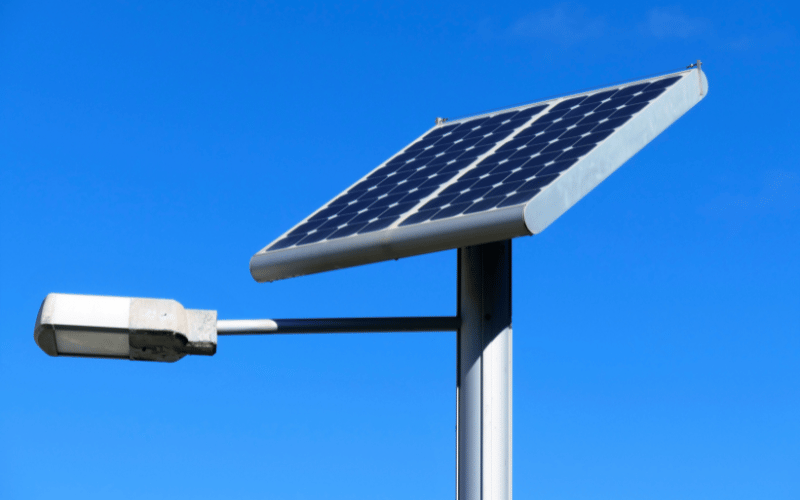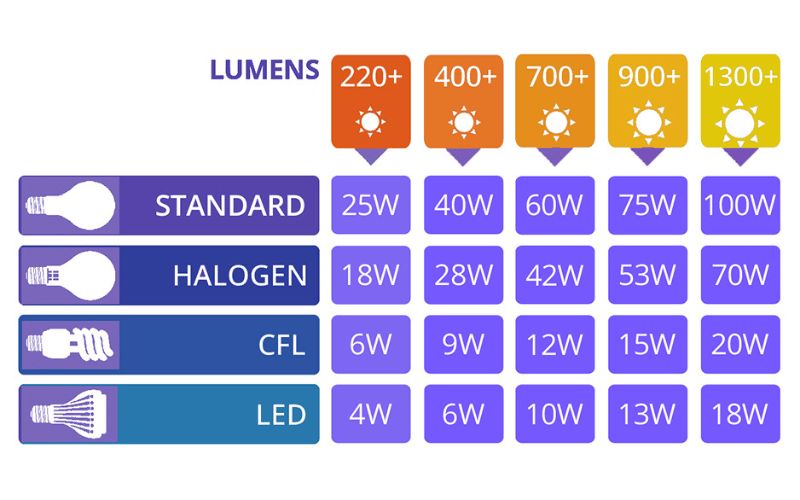Solar lighting has revolutionized outdoor illumination by offering eco-friendly, cost-effective, and versatile solutions for various applications. Whether you’re lighting up a cozy garden path, securing your driveway, or illuminating large public spaces, understanding the role of lumens is key to choosing the right solar lights. This guide dives deep into the world of solar lighting, explaining lumen ranges, types of solar lights, and practical tips to help you create well-lit, functional, and aesthetically pleasing outdoor spaces.
Table of Contents
ToggleWhat is the Highest Lumens for Solar Lights?
Understanding Lumens in Solar Lights
Lumens measure the total visible light emitted by a source, determining how bright the light appears. In solar lights, lumens directly impact visibility and functionality, making them a critical factor when choosing outdoor lighting. Solar lights typically range from 50 lumens for decorative purposes to over 10,000 lumens for industrial-grade applications like streetlights or large parking lots. Understanding this range helps you select the right brightness for your needs.
What are Lumens?
Lumens quantify brightness, unlike watts, which measure energy consumption. For example:
- 50-100 lumens: Ideal for decorative garden lights or accent lighting.
- 300-500 lumens: Suitable for pathways, small patios, or driveways.
- 1000 lumens or more: Perfect for security lighting, large outdoor areas, or floodlights.
To put it in perspective, a standard 60-watt incandescent bulb emits around 800 lumens, while a solar security light with 2000 lumens can illuminate a large driveway or backyard. Knowing these benchmarks ensures you choose the right solar light for your specific needs.
Why are Many Lumens Needed for Outdoor Lighting?
Higher lumens are essential for outdoor lighting to ensure safety, visibility, and functionality. Here’s how different lumen levels apply to real-world scenarios:
- Pathways and Driveways: Solar lights with 300-500 lumens prevent trips and falls by clearly illuminating walking areas.
- Security Lighting: Lights with 1000-2000 lumens deter intruders and provide clear visibility for security cameras.
- Outdoor Activities: For patios or gardens, 500-700 lumens create a well-lit environment for evening gatherings or tasks.
- Streetlights or Large Areas: Industrial-grade solar lights with 5000 lumens or more ensure maximum coverage and brightness.
How to Measure Lumens in Solar Lights
To evaluate the brightness of solar lights, follow these steps:
- Check the Product Specifications: Most solar lights list their lumen output on the packaging or product description. Look for this information before purchasing.
- Compare with Standard Bulbs: Use a reference point, such as a 60-watt incandescent bulb (800 lumens), to gauge the brightness level.
- Test in Real Conditions: Place the solar light in its intended location and observe its performance at night. Ensure it provides adequate illumination for the area.
- Use a Light Meter or App: For precise measurements, use a light meter or smartphone apps designed to measure lumens. These tools can help you verify the light’s output and ensure it meets your expectations.
By understanding the range of lumens available and how to measure them, you can confidently choose solar lights that meet your outdoor lighting needs, whether for safety, aesthetics, or functionality.
Types of Solar Lights and Their Lumens
Outdoor Solar Lights: An Overview
Solar lights come in various types, each tailored for specific outdoor applications. These lights harness solar energy during the day and provide illumination at night, making them both eco-friendly and cost-effective. Common types include:
- Pathway Lights: Designed for walkways and driveways, offering subtle illumination.
- Security Lights: Bright, motion-activated lights for safety and visibility.
- Floodlights: High-powered lights for large areas like backyards or parking lots.
- Decorative Lights: Low-lumen options for aesthetic purposes, such as string lights or lanterns.
For example, a solar floodlight might emit 2000 lumens to cover a large backyard, while a decorative garden light may only emit 50 lumens to create a soft glow. Understanding these differences ensures you select the right type for your needs.
Pathway Lights and Their Lumen Output
Pathway lights typically emit between 100 and 300 lumens, providing a soft, ambient glow that enhances visibility without being overpowering. Here’s how to choose the right brightness:
- Narrow Walkways: Opt for lights on the lower end of the range (100-150 lumens) to avoid excessive brightness.
- Wider Paths or Driveways: Use brighter lights (200-300 lumens) for better coverage and visibility.
Pro Tip: Space pathway lights 6-8 feet apart for even illumination and to avoid dark spots. For curved paths, consider placing lights closer together to maintain consistent brightness.
Security Lights: Higher Lumens for Safety
Security lights are essential for deterring intruders and ensuring safety around your property. These lights usually range from 700 to 2000 lumens or more, depending on the area you need to illuminate. Here’s what to consider:
- Motion-Activated Lights: Conserve energy by only turning on when movement is detected. Ideal for entryways, garages, and driveways.
- Always-On Lights: Provide constant illumination for areas requiring continuous visibility, such as backyards or parking lots.
Example: A 1000-lumen motion-activated light can cover a 20-foot radius, making it perfect for driveways or entryways. For larger areas, consider multiple lights or a 2000-lumen floodlight.
Choosing the Right Solar Light Based on Lumens
Matching the lumen output to your specific needs ensures optimal performance. Here’s a quick guide:
- Pathways and Gardens: Use 100-300 lumens for a subtle, decorative glow.
- Patios and Decks: Opt for 300-700 lumens to create a cozy yet functional space for gatherings.
- Driveways and Entrances: Choose 700-1000 lumens for clear visibility and safety.
- Security and Floodlights: Select 1000-2000 lumens or higher for maximum brightness and coverage.
Real-World Example: For a 20-foot driveway, install two 1000-lumen lights at either end to ensure even illumination. For a small patio, a single 500-lumen light placed centrally can provide sufficient brightness for evening activities.
By understanding the specific lumen ranges and applications of different solar lights, you can create well-lit, functional, and aesthetically pleasing outdoor spaces.
How Many Lumens are Needed for Different Areas?
Brighter Light Options: 200 Lumens vs. 1000 Lumens
The brightness required for outdoor spaces depends on the area and its purpose. A solar light with 200 lumens provides a soft, ambient glow, ideal for smaller, decorative applications. In contrast, a 1000-lumen light delivers intense brightness, perfect for security or high-traffic areas. Here’s a breakdown of their uses:
- 200 Lumens: Best for creating a welcoming atmosphere along 10-15 foot garden paths, highlighting landscaping features, or adding subtle lighting to flower beds.
- 1000 Lumens: Ideal for 30-foot driveways, large backyards, or areas requiring clear visibility for safety and security. For example, a 1000-lumen light can illuminate a garage entrance or deter intruders in dark corners.
Pro Tip: Combine different lumen levels in your outdoor space for layered lighting. Use 200-lumen lights for decorative accents and 1000-lumen lights for functional or security purposes.
| Application | Lumen Range | Description |
|---|---|---|
| Decorative Lighting | 50-100 lumens | Ideal for accenting plants, statues, or water features with a soft glow. |
| Pathways and Gardens | 100-300 lumens | Provides subtle, guiding light for walkways and landscaping. |
| Patios and Decks | 300-700 lumens | Creates a cozy yet functional space for gatherings and evening activities. |
| Driveways and Entrances | 700-1000 lumens | Ensures clear visibility and safety for high-traffic areas. |
| Security Lighting | 1000-2000 lumens | Deters intruders and illuminates dark areas for enhanced safety. |
| Streetlights | 5000-10,000 lumens | Covers large areas like roads, parking lots, or public spaces with bright light. |
LED Solar Lights: Maximizing Efficiency
LED solar lights are highly efficient and long-lasting, but their performance depends on proper setup and maintenance. Follow these tips to get the most out of them:
- Positioning Matters: Place solar panels in direct sunlight, ideally at a 30-45 degree angle, to maximize energy absorption. Avoid shaded areas caused by trees or buildings.
- Regular Maintenance: Clean the solar panels every 2-3 months to remove dirt, dust, or debris that can block sunlight and reduce efficiency.
- Choose Adjustable Lights: Opt for models with adjustable brightness settings or motion sensors. For example, a light with a dim mode (200 lumens) and a bright mode (1000 lumens) can save energy while providing flexibility.
Troubleshooting Tip: If your solar light dims over time, check the battery. Replacing it every 1-2 years can restore optimal performance.
Popular Outdoor Solar Lighting Solutions
Here are some effective solar lighting setups tailored to different areas:
- Pathways and Gardens: Use 100-300 lumens spaced 6-8 feet apart for a soft, guiding glow. For curved paths, reduce spacing to maintain consistent brightness.
- Patios and Decks: Install 300-700 lumens to create a cozy yet functional space for gatherings. For a 15×15-foot patio, three 500-lumen lights placed at equal distances provide balanced lighting.
- Driveways and Entrances: Opt for 700-1000 lumens to ensure safety and visibility. For a 20-foot driveway, install two 1000-lumen lights at either end for even coverage.
- Security Lighting: Choose motion-activated solar lights with 1000-2000 lumens to illuminate dark areas and enhance security. For example, a 1500-lumen light with a 120-degree detection angle can cover a wide area effectively.
Real-World Example: For a backyard with a seating area and a garden, combine 500-lumen lights for the patio and 200-lumen lights for decorative accents in the garden. This creates a functional yet visually appealing setup.
By tailoring the lumen output and setup to specific areas, you can create outdoor spaces that are both practical and aesthetically pleasing.
Specialized Solar Lighting Needs
Solar Street Lights: Power and Lumens
Solar street lights are designed to provide powerful illumination for large outdoor areas like roads, parking lots, and public spaces. These lights typically range from 2000 to 10,000 lumens, depending on the coverage area and brightness required. Here’s what to consider when selecting solar street lights:
- High Lumen Output: For wide and clear visibility, opt for lights with at least 5000 lumens. For example, a 5000-lumen light can illuminate a 30×30-foot area, making it ideal for small parking lots or community roads.
- Durability: Look for weather-resistant materials, such as aluminum alloy or stainless steel, to withstand rain, wind, and extreme temperatures.
- Battery Capacity: Ensure the battery can store enough energy to power the light throughout the night. A lithium-ion battery with a capacity of 20,000mAh or more is a good benchmark for high-lumen street lights.
Pro Tip: For areas with limited sunlight, choose solar street lights with high-efficiency panels and backup battery options to ensure consistent performance.
Garden Lights and Their Lumen Requirements
Garden lights focus on enhancing the beauty and functionality of outdoor spaces. These lights usually range from 50 to 300 lumens, providing a soft, decorative glow. Here’s how to choose the right garden lights:
- Accent Lighting: Use low-lumen lights (50-100 lumens) to highlight plants, statues, or water features. For example, a 75-lumen spotlight can beautifully illuminate a small tree or garden sculpture.
- Functional Lighting: Opt for brighter lights (200-300 lumens) for pathways or seating areas. For a 10-foot garden path, place 200-lumen lights every 6-8 feet for even illumination.
- Design and Placement: Select lights that complement your garden’s style, such as warm white lights for a cozy ambiance or cool white lights for a modern look. Position them strategically to avoid over-lighting and maintain a natural feel.
Pro Tip: Use solar lights with adjustable heads to direct light exactly where it’s needed, reducing glare and enhancing the overall aesthetic.
Motion Sensor Lights: Combining Lumens and Security
Motion sensor solar lights are ideal for enhancing security while conserving energy. These lights activate only when movement is detected, making them efficient and effective. Key considerations include:
- Lumen Range: Choose lights with 700-2000 lumens for bright, focused illumination. For example, a 1500-lumen motion sensor light can cover a 20×20-foot driveway effectively.
- Detection Range: Look for models with a wide detection angle (120-180 degrees) and a long range (10-30 feet). A light with a 30-foot detection range is perfect for large backyards or entryways.
- Adjustable Settings: Opt for lights with customizable sensitivity and duration. For instance, a light that stays on for 30 seconds after detecting motion can save energy while providing adequate security.
Real-World Example: Install a 1000-lumen motion sensor light near your garage door with a 120-degree detection angle to ensure the area is well-lit when you arrive home at night.
By understanding the specialized requirements of solar lighting and tailoring your choices to specific needs, you can create outdoor spaces that are both functional and visually appealing.
Frequently Asked Questions
Q: What is the highest lumen solar light available?
A: The highest lumen solar lights can exceed 10,000 lumens, making them suitable for large outdoor areas like parking lots, streets, and public spaces. For residential use, high-lumen options typically range from 1000 to 5000 lumens, ideal for security lighting and driveways.
Q: How do I measure lumens for solar lights?
A: Lumens measure the brightness of light emitted by a source. To evaluate solar lights, check the product specifications for lumen output. Higher lumens mean brighter light, which is essential for areas requiring strong illumination, such as pathways or security zones.
Q: How many lumens are needed for outdoor lighting?
A: The lumens needed depend on the purpose. For pathways and gardens, 100-300 lumens provide a soft glow. Patios and decks require 300-700 lumens for functional lighting, while security lights or floodlights need 1000 lumens or more for maximum visibility.
Q: What are the different types of solar lights?
A: Solar lights come in various types, including:
- Path Lights: For walkways and driveways.
- Flood Lights: For large areas like backyards or parking lots.
- Wall Lights: For entryways or walls.
- Garden Lights: For decorative accents in landscaping.
Each type serves specific purposes, from aesthetics to functionality.
Q: What is the difference between LED solar lights and traditional bulbs?
A: LED solar lights are more energy-efficient and produce more lumens per watt compared to traditional bulbs. They consume less power, last longer, and are better suited for solar lighting systems, making them a cost-effective and eco-friendly choice.
Q: Can solar lights be used for security purposes?
A: Yes, solar lights are excellent for security. Motion sensor solar lights and high-lumen floodlights can illuminate areas when movement is detected, deterring intruders and enhancing safety around entryways, driveways, and backyards.
Q: How do solar panels affect the lumen output of solar lights?
A: Solar panels directly impact the performance of solar lights. High-efficiency panels generate more energy, which powers the lights and increases their lumen output. Clean and well-positioned panels ensure maximum brightness and consistent performance.
Q: What features should I look for in outdoor solar lighting?
A: Look for these key features:
- Lumens Output: Ensure the brightness matches your needs.
- Battery Capacity: Choose lights with long-lasting batteries for overnight use.
- Durability: Opt for waterproof and weather-resistant designs.
- Additional Features: Motion sensors, adjustable brightness, and timers can enhance functionality.
Conclusion
Choosing the right solar lights for your outdoor spaces requires a clear understanding of lumens, light types, and specific needs. From decorative garden lights to high-lumen security solutions, solar lighting offers a range of options to enhance safety, functionality, and ambiance. By considering factors like lumen output, battery capacity, and additional features, you can make informed decisions and create outdoor spaces that are both practical and visually appealing. With the right setup, solar lights can transform your environment while promoting sustainability.



